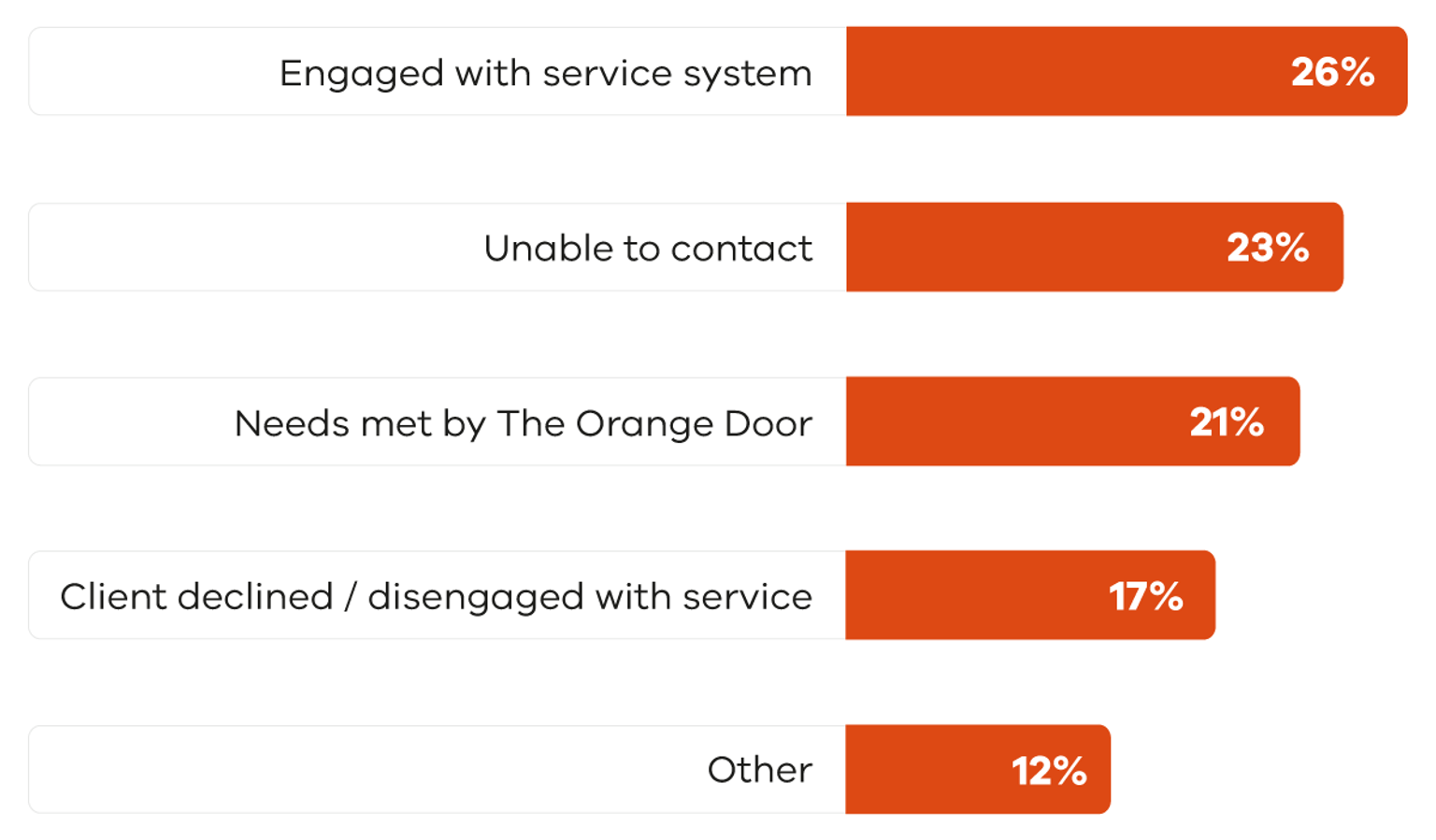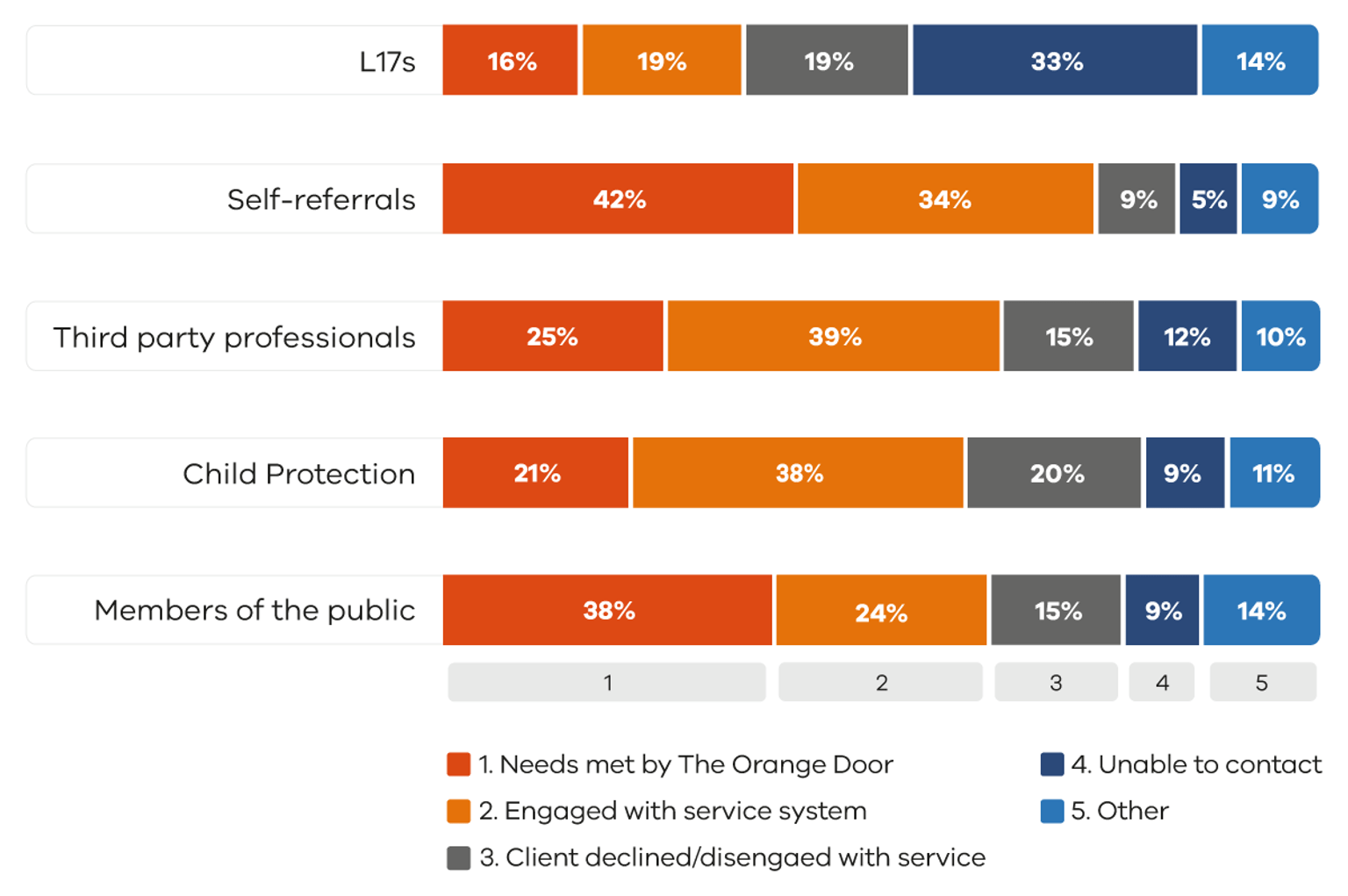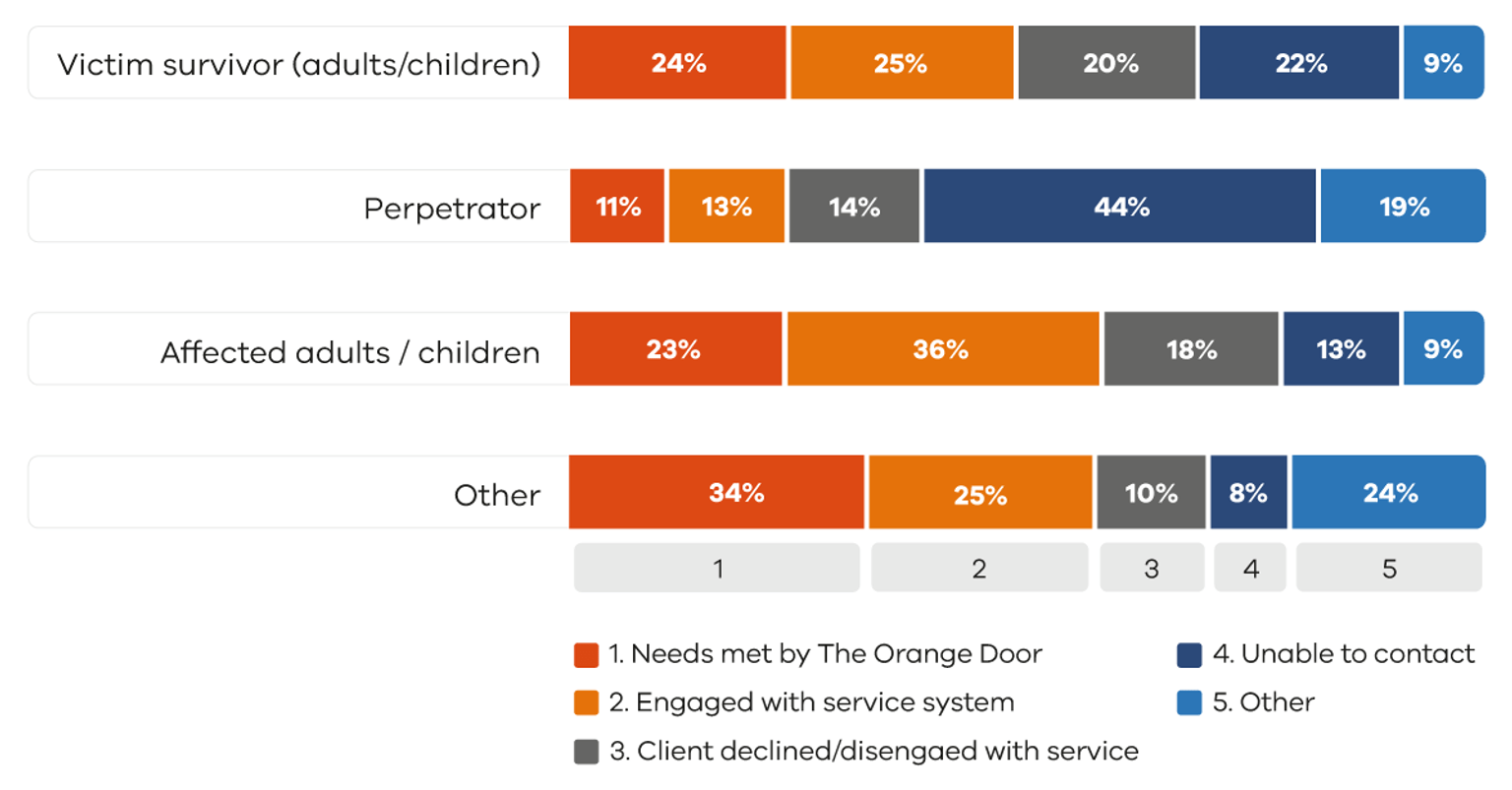The Orange Door network ends involvement with an individual or family for several reasons. These can include where the person’s needs are met within The Orange Door, the person is connected to a service that they need, the person decides not to engage with The Orange Door or the person could not be contacted despite multiple attempts by The Orange Door practitioner. In a minority of cases, where an unacceptable or unmanaged risk remains (such as to a child), The Orange Door network practitioners will escalate the matter to statutory or emergency services, wherever possible this is done in collaboration with the client.
In 2020-21, 21.2% of clients had their needs met by The Orange Door network without requiring the allocation of further supports (Figure 17).[1] This included cases where people were seeking information and advice, people were provided with a crisis response or people’s needs were met through the use of brokerage funds to purchase immediate supports (such as consumables or safety and security adaptations or repairs). In 26.0% of cases, clients required further support and The Orange Door network connected them to a service to meet their additional needs such as housing, mental health and alcohol and other drug services. This indicates that, for almost half of cases (47.2%), The Orange Door network met the needs of clients or connected them with a further service for additional supports.
The Orange Door network was unable to make contact with the person referred in 23.2% of cases and in a further 17.0% of cases the person chose not to take up the service offering[2].
When comparing the case closure reasons across different referral types, we see that those that were more likely to have their ‘needs met by The Orange Door’ were those that were a result of a self-referral (42.1%) compared to those that were referred via an L17 referral (15.9%) (Figure 18).[3] The large difference is likely due the voluntary nature of a self-referral where the person is ready and seeking support, compared to other referral types. A large proportion of cases closed due to being unable to be contacted were as a result of an L17 referral (33.0%).
Case closure outcomes vary widely between different types of clients (Figure 19).[4] The proportion of clients who had their needs met by The Orange Door or were connected to a further service was 48.7% for victim survivors of family violence, 23.7% for perpetrators of family violence and 59.6% for clients presenting with child safety and wellbeing needs (referred to as affected adults/children).
Of particular note is that the primary case closure reason for cases where the client role was recorded as perpetrator was ‘unable to contact’ (44.1%), reflecting that perpetrators are more difficult to contact (e.g. there are many instances on L17 reports where the perpetrator contact details are unknown because they aren’t present when police arrive or the victim survivor makes their own police report), are less likely to respond to attempts at contact or will more frequently decline the offer of services. On the other hand, the primary case closure reason for cases where the client role was recorded as victim survivor (24.6%) and affected adults/children (36.2%) was ‘engaged with service system’.
Notes
[1] Note that case closure reasons with small proportions have been grouped into ‘other’.
[2] Instances where practitioners are unable to contact a person occur predominantly with L17 reports where people don't respond following an incident. Practitioners in The Orange Door try calling a minimum of three times and at different times of the day to maximise the opportunity for engagement, however some people choose not to engage given The Orange Door is a voluntary service.
[3,4] Note that case closure reasons with small proportions have been grouped into ‘other’ and some client roles have also been grouped.
Updated


